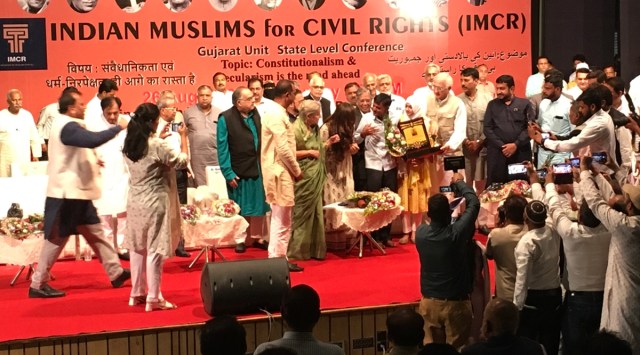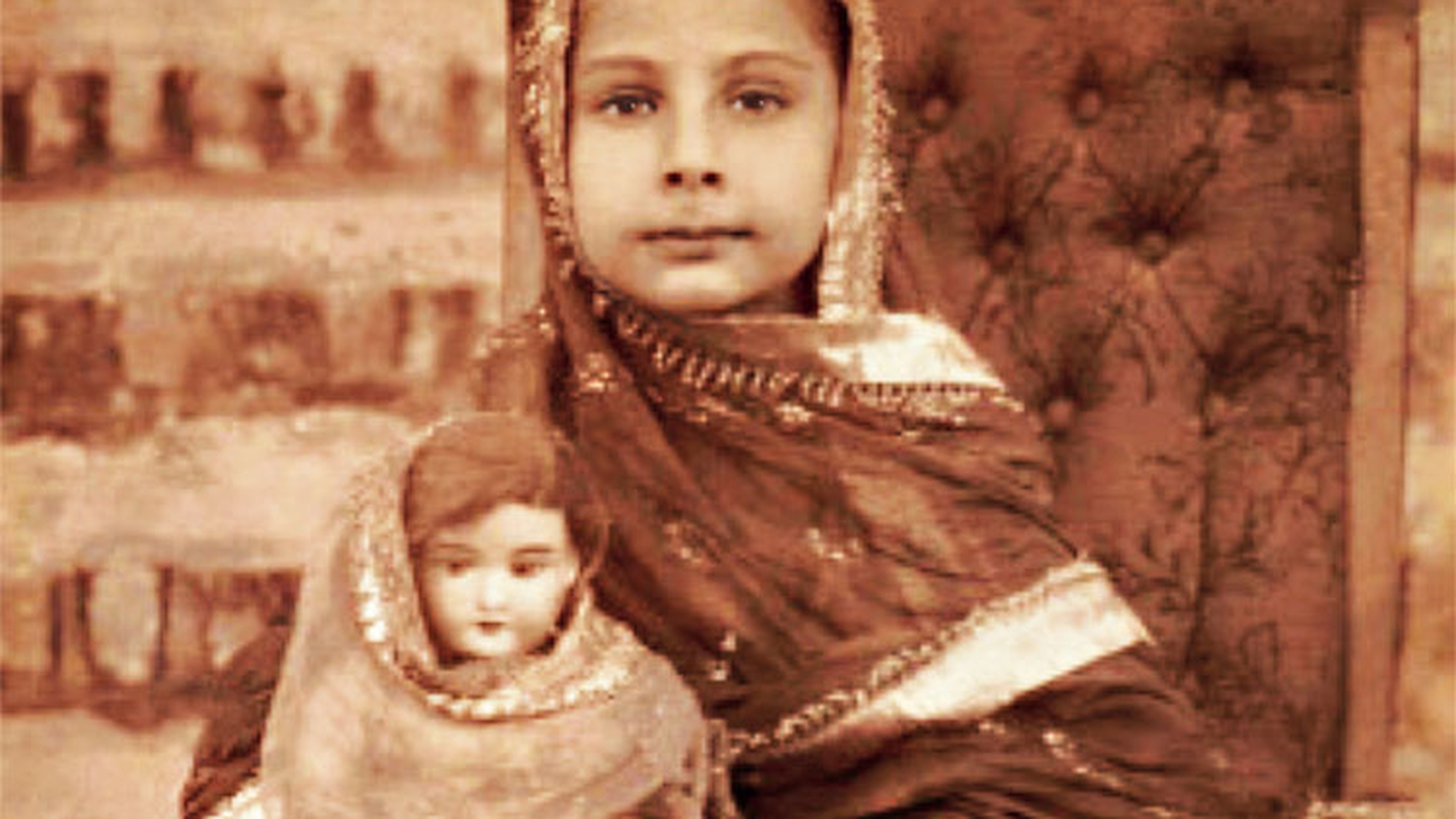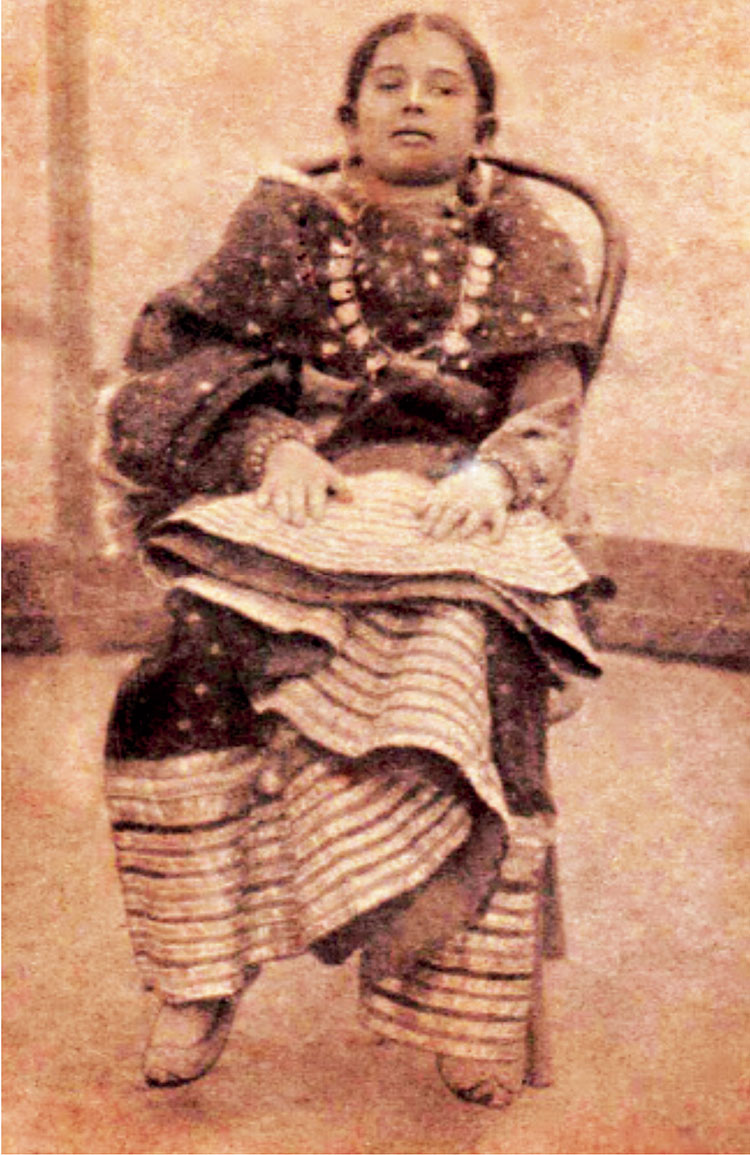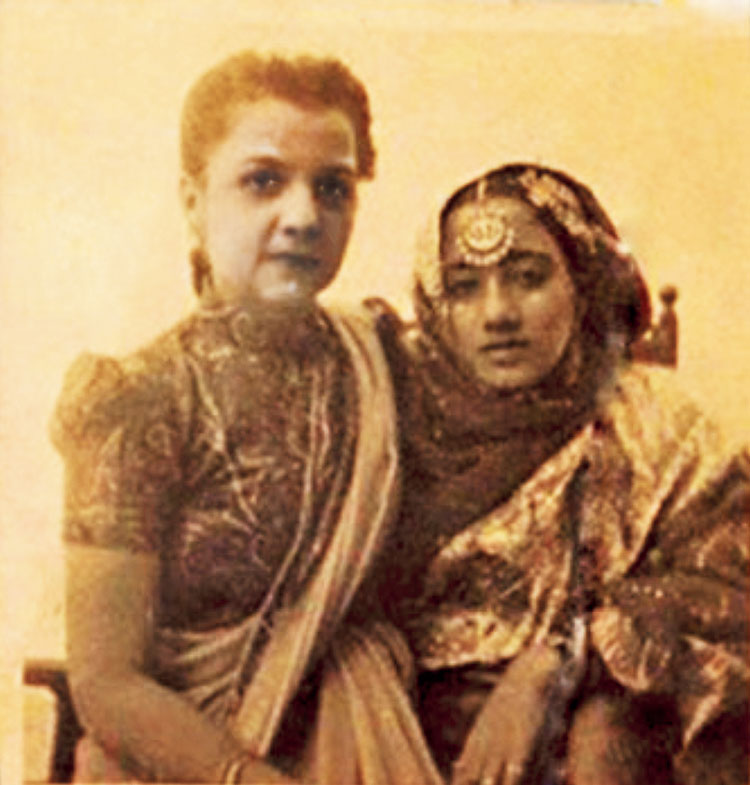Lunava Village (Mehsana District), GUJARAT:
Also present at the event were Gujarat Congress MLAs Amit Chavda and Imran Khedawala, former Congress MLA Gyasuddin Shaikh, AMC leader of Opposition Shehzadkhan Pathan, and late Congress Rajya Sabha MP Ahmed Patel’s daughter Mumtaz Patel.

The Indian Muslims for Civil Rights’ (IMCR) Gujarat unit on Saturday felicitated 15-year-old Arnazbanu Sipahi from Mehsana, who was not called for a felicitation ceremony by her school despite holding the first position in the Class X board exams at her school, on Independence Day.
A former student of K T Patel High School, who had topped her school in Class X state board exams in March, Sipahi has now shifted to a nearby grant-in-aid school for her Class XI studies.
K T Patel High School principal has maintained that the August 15 award ceremony was organised by the school staffers and the school would felicitate Sipahi instead on January 26, next year.
Speaking to The Indian Express , Mehsana District Education Officer A K Modhpatel had earlier said, “I had checked with the school and learnt that the August 15 award ceremony for first three toppers from Class X and XII was organised by the teachers. They had collected funds to motivate school students. The girl and those who were not studying in the school (when the felicitation ceremony was held on August 15), will be awarded on January 26.”
Maintaining that she was “wronged” by the school, the IMCR – at a state-level conference on constitutionalism and secularism held in Ahmedabad – called Sipahi on stage to felicitate her in the presence of a host of Muslim leaders. Azam Baig, national general secretary (organisational) of IMCR, announced that he would personally fund Sipahi’s education, including higher studies.
Handing her a plaque and a flower bouquet on stage were former IMCR trustee and Congress leader Salman Khurshid, former member of Planning Commi-ssion, Syeda Saiyidain Hameed, as well as Samajwadi Party MLA Abu Azmi, among others.
Addressing the conference on the topic of ‘constitutionalism and secularism and the way forward’, Hameed cited Arnazbanu’s “experience” and the recent viral purported video of a Muslim boy being hit by his classmates upon being goaded by their teacher at a Muzaffarnagar school, as “examples where children are being discriminated against (on religious lines).” “We have to build a common front… work in an organised way (to counter the polarisation)… The Gujarat riots’ blueprint, which is now being attempted to be implemented elsewhere in India, we must not let it succeed.”
K Rehman Khan, former deputy chairman of Rajya Sabha , urged Muslims to be “givers” and not “seekers”, emphasising that they must empower themselves and “saving the Constitution should be the first priority”. “Only if the Constitution and secularism is saved, can we live a life of dignity,” Khan added.
Former Union minister Salman Khurshid said that “it is not acceptable that rule of law is replaced by rule of bulldozer”. He added that the “public must understand that what is happening today at someone else’s household can also happen at your household”. “We want that the majority speaks for the minority and the minority speaks for the majority,” Khurshid said.
Also present at the event were Gujarat Congress MLAs Amit Chavda and Imran Khedawala, former Congress MLA Gyasuddin Shaikh, AMC leader of Opposition Shehzadkhan Pathan, and late Congress Rajya Sabha MP Ahmed Patel’s daughter Mumtaz Patel.
source: http://www.indianexpress.com / The Indian Express / Home> News> Cities> Ahmedabad / by Express News Service, Ahmedabad (headline edited) / August 27th, 2023











